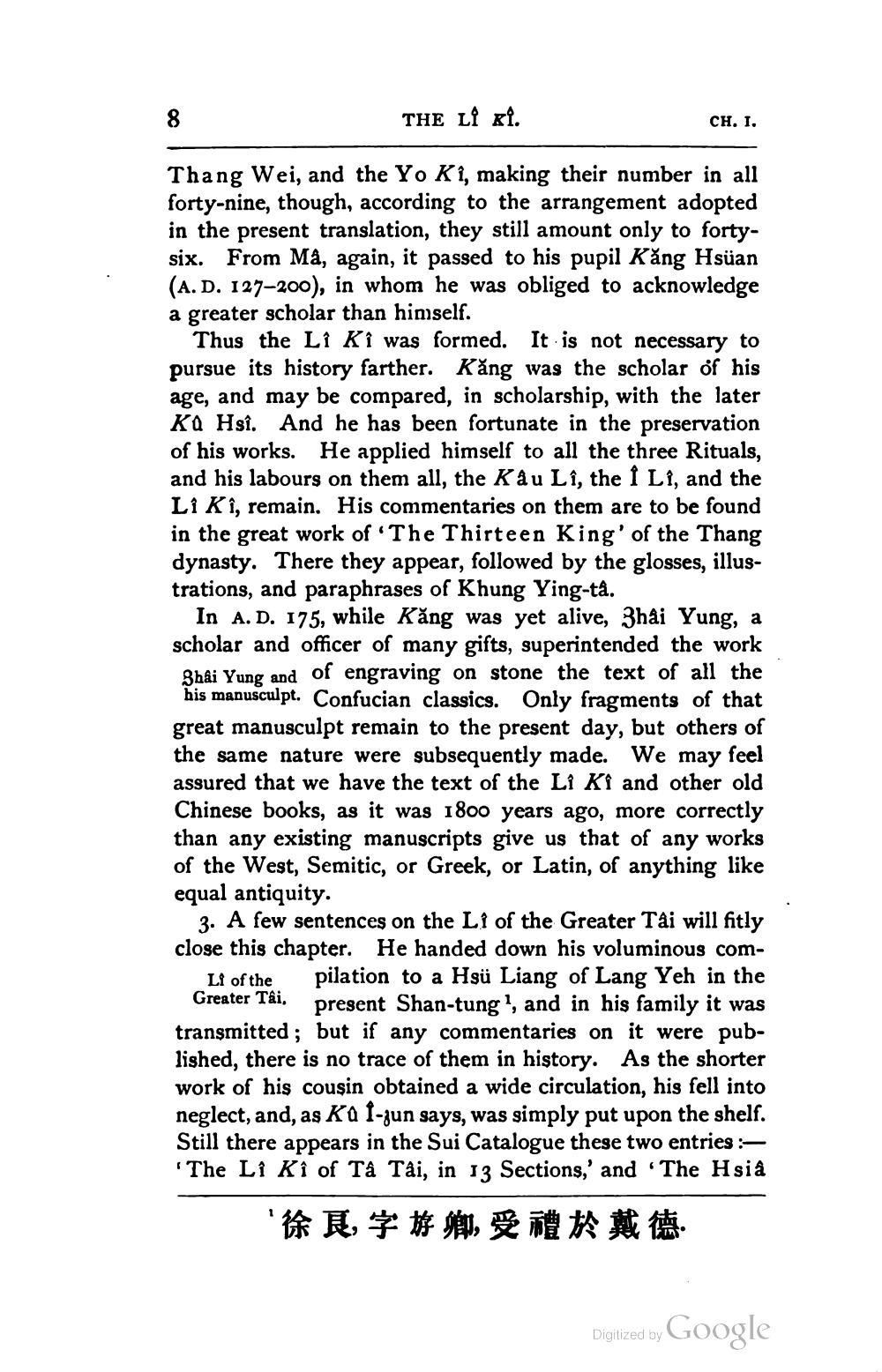________________
THE LÎ ki.
CH. 1.
Thang Wei, and the Yo Ki, making their number in all forty-nine, though, according to the arrangement adopted in the present translation, they still amount only to fortysix. From Må, again, it passed to his pupil Kăng Hsuan (A.D. 127–200), in whom he was obliged to acknowledge a greater scholar than himself.
Thus the Li Kî was formed. It is not necessary to pursue its history farther. Kăng was the scholar of his age, and may be compared, in scholarship, with the later KQ Hsi. And he has been fortunate in the preservation of his works. He applied himself to all the three Rituals, and his labours on them all, the Kau Lî, the I Li, and the Li Kî, remain. His commentaries on them are to be found in the great work of The Thirteen King' of the Thang dynasty. There they appear, followed by the glosses, illustrations, and paraphrases of Khung Ying-tå.
In A. D. 175, while Käng was yet alive, Zhai Yung, a scholar and officer of many gifts, superintended the work Bhai Yung and of engraving on stone the text of all the his manusculpt. Confucian classics. Only fragments of that great manusculpt remain to the present day, but others of the same nature were subsequently made. We may feel assured that we have the text of the Li Ki and other old Chinese books, as it was 1800 years ago, more correctly than any existing manuscripts give us that of any works of the West, Semitic, or Greek, or Latin, of anything like equal antiquity.
3. A few sentences on the Lî of the Greater Tai will fitly close this chapter. He handed down his voluminous com
Lf of the pilation to a Hsü Liang of Lang Yeh in the Greater Tâi,
present Shan-tung 1, and in his family it was
present Shantun transmitted ; but if any commentaries on it were published, there is no trace of them in history. As the shorter work of his cousin obtained a wide circulation, his fell into neglect, and, as Ka 1-jun says, was simply put upon the shelf. Still there appears in the Sui Catalogue these two entries :'The Lî Kî of Tå Tâi, in 13 Sections,' and 'The Hsia
Pa
1, *#
*
this
Digitized by Google




